
Ventilator condensed
We did it! We squeezed our highly acclaimed Ventilator technology into a standard size stompbox enclosure. But while we cut corners in size, we didn't cut corners in sound quality. The micro Vents feature an equally powerful DSP as its bigger brothers, Ventilator II and mini Vent II. We even added a new circuit - an analog blend - providing latency free mixing-in of the dry signal.

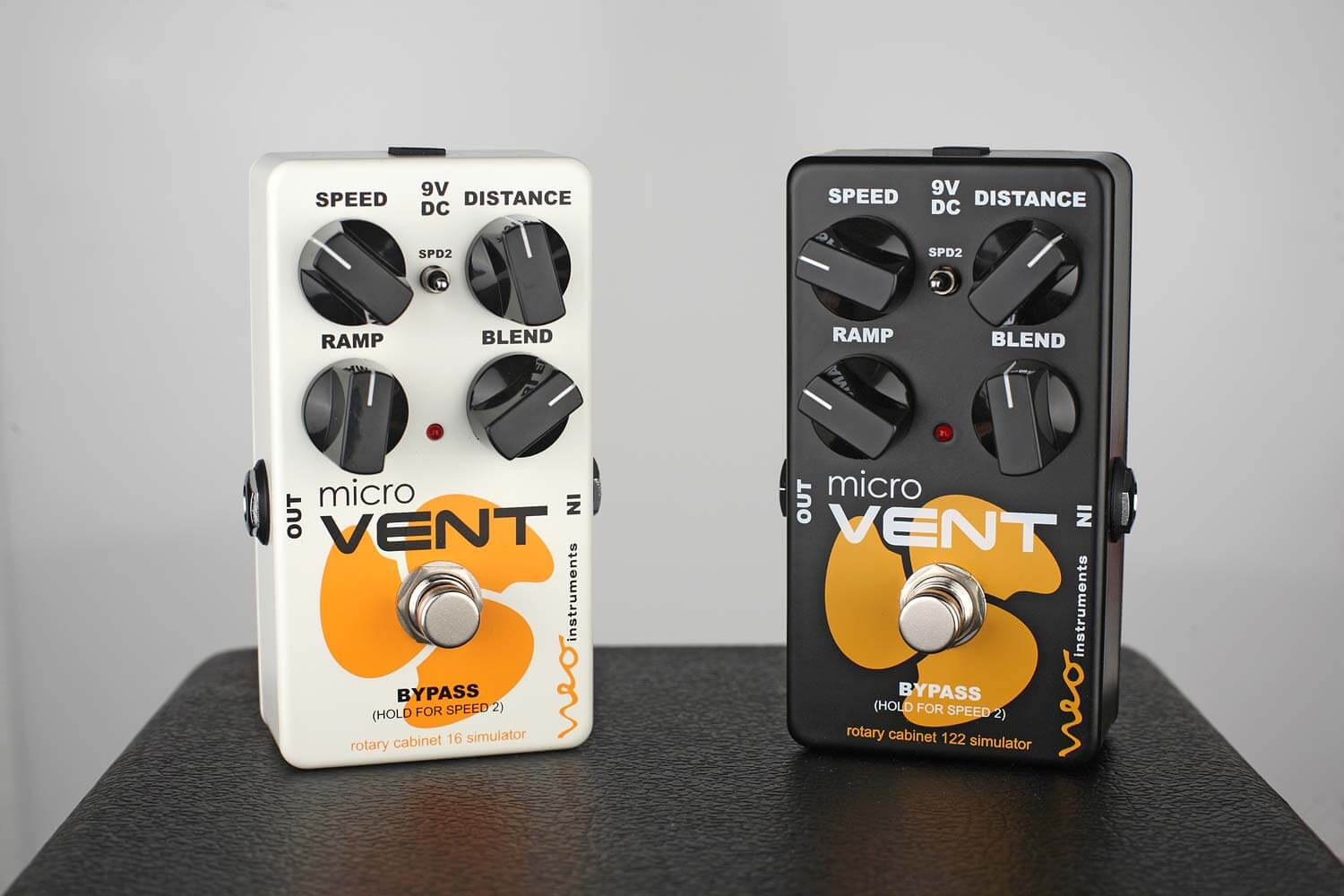
Why two?
The micro Vent comes in two versions: the black micro Vent 122 and the white micro Vent 16. But what's the difference besides color? You guessed it – the micro Vent 122 simulates a Leslie 122, deriving its algorithm from the famous Ventilator II, while the micro Vent 16 offers a newly designed simulation of a Vibratone guitar Leslie. The micro VENT raises the bar for compact rotary effects pedals and delivers the best sounding, best-in-class rotary emulation.
micro Vent 122
Just like its brothers Ventilator II and mini Vent II, the micro Vent 122 is modeled after the Leslie 122 rotary speaker. The algorithm simulates the classic micing technique with one mic for the horn and one mic for the drum rotor. The distance of both mics can be varied with the DISTANCE pot. Just like the monstrous original, the micro Vent 122 sounds rich and complex with deep movement and modulation. Perfect for rotary sounds that shall stand out.
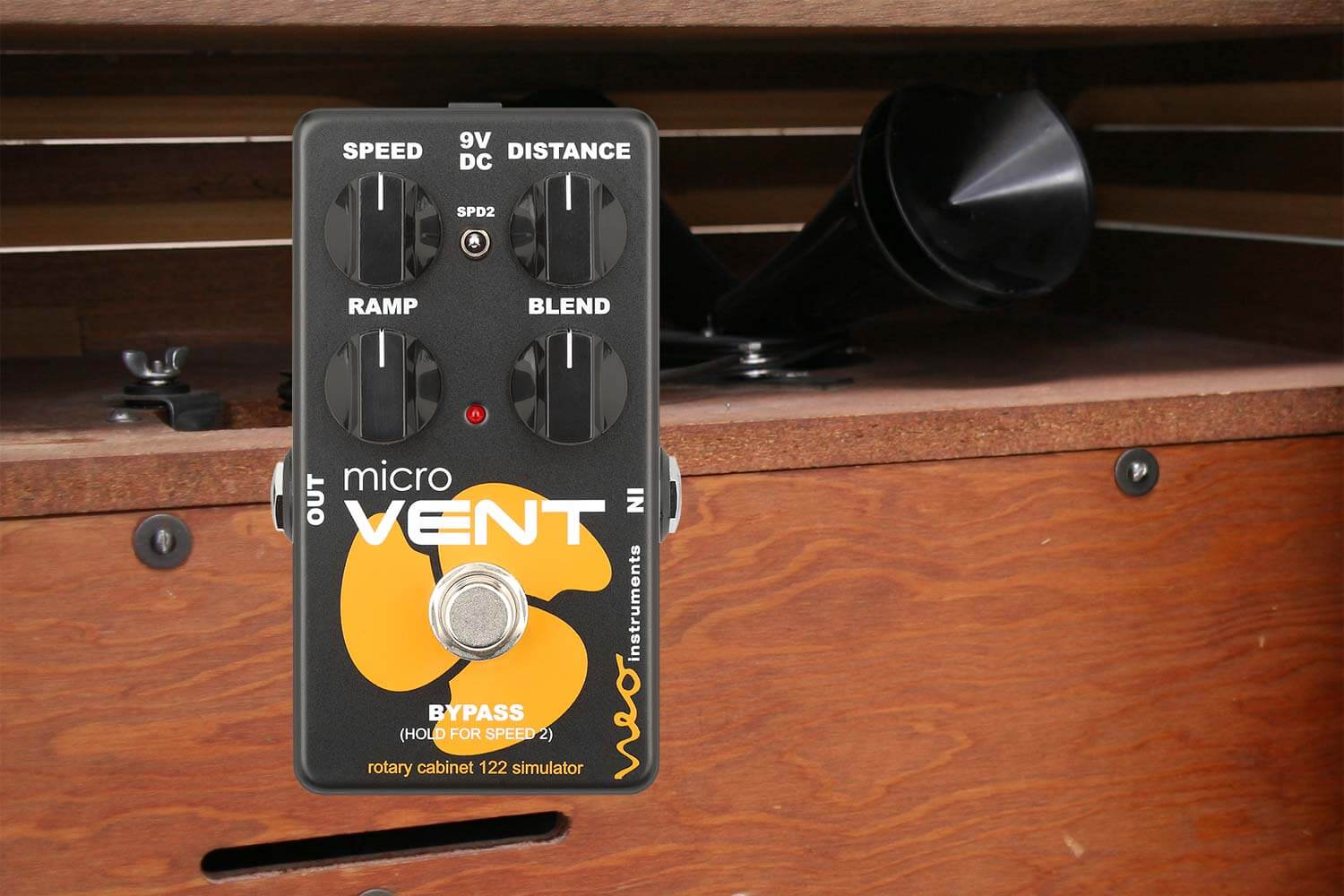
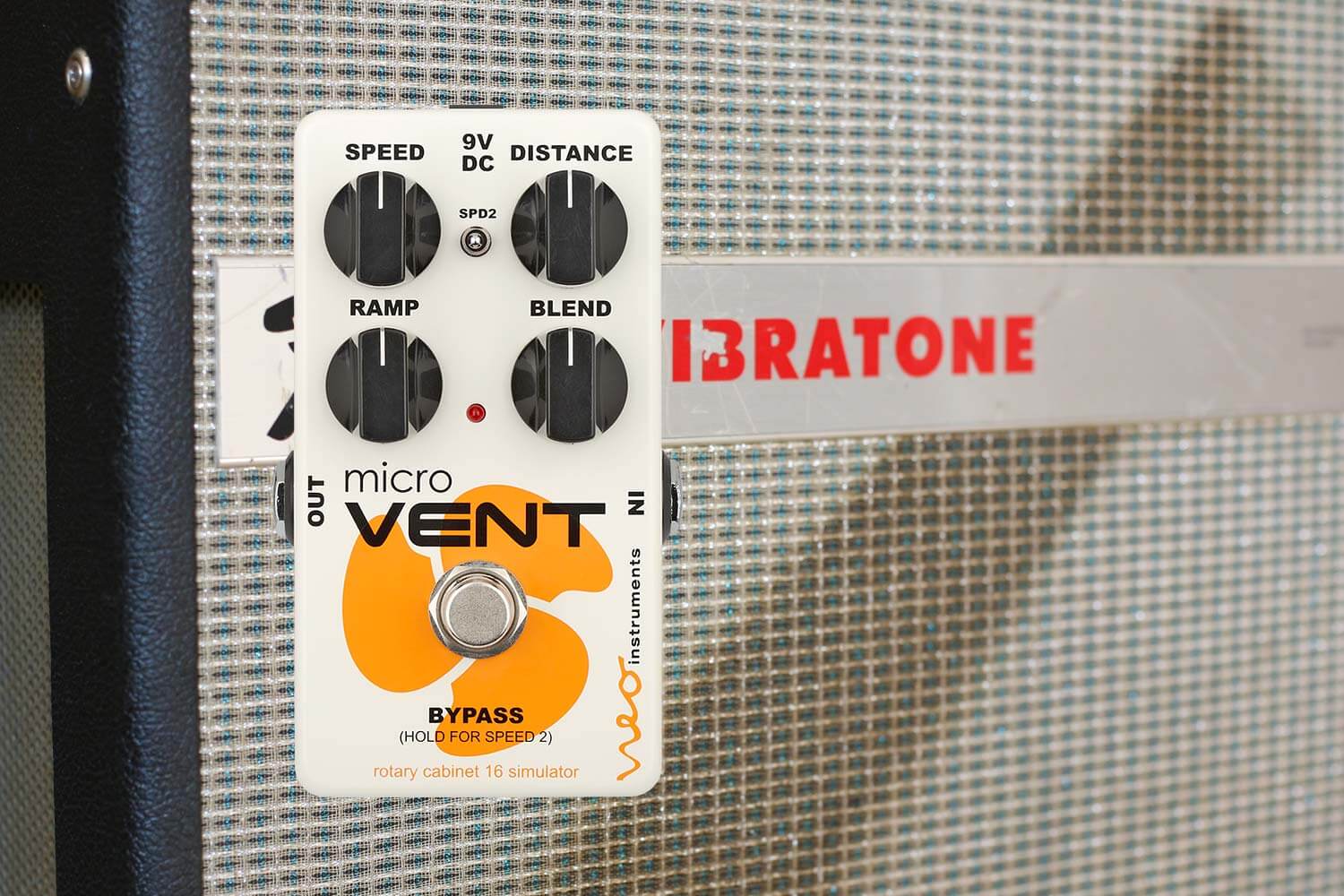
micro Vent 16
The micro Vent 16 simulates the classic guitar leslie with a 10 inch speaker into a single drum rotor. Yes, we are talking about the vertically suspended magic of the Fender Vibratone. The algorithm simulates capturing the Vibratone with one mic and the distance from the cabinet is variable. Compared to the micro Vent 122, the micro Vent 16 sounds less complex and dominant. It is perfect for rhythm work and for giving lead tones the final touch.
Controls explained
Only the micro Vent 122 is shown here as the controls and functions are identical on both micro Vent models.
(Click on a control element to show its function)
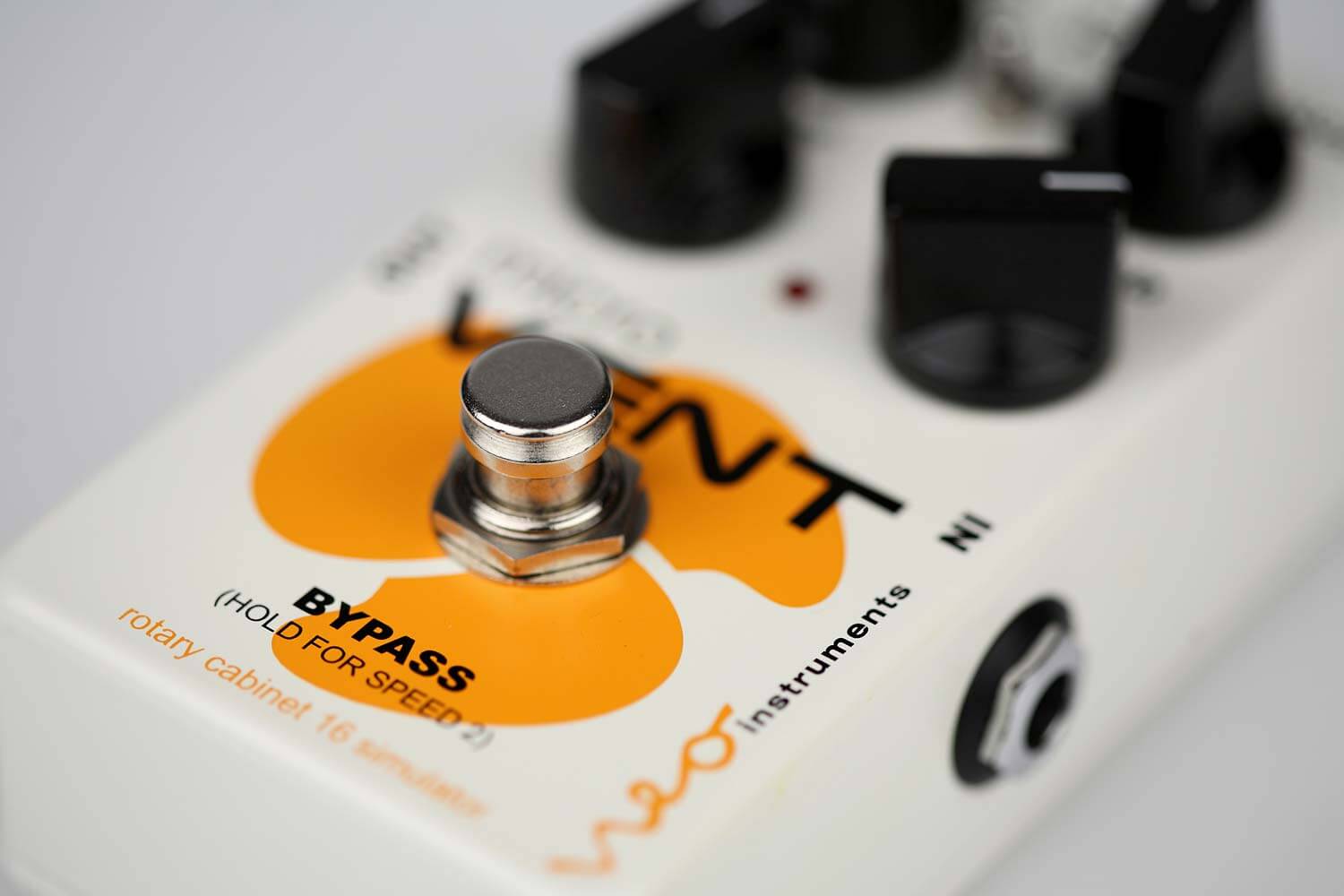
Switch Modes
The micro Vent´s BYPASS switch offers a lot more than you'd think. Use it to switch the effect on and off or select between the two speeds. Various different modes determine if switching is done momentarily or latching. You can also use the BYPASS switch to select speeds exclusively, leaving the effect on all the time. This comes in handy when the unit is used together with switching loopers, inspiring highly creative performances.
Two Speeds
The micro Vent has two adjustable speeds. Speed 1 is controlled with a pot and ranges continuously from Slow to Fast, providing intermediate speeds as well; Speed 2 is selected via a 3-way switch featuring the standard speeds – Slow, Fast and Stop. Special SWITCH MODES provide flexible switching, e.g. from Slow to Fast, Fast to Slow, Slow to Stop, Stop to Fast, etc. The combinations are almost limitless.The RAMP parameter determines acceleration and deceleration between the two speeds. You will never get tired of listening to the rotors spooling up and down, recreating the sounds that made the originals so glorious.
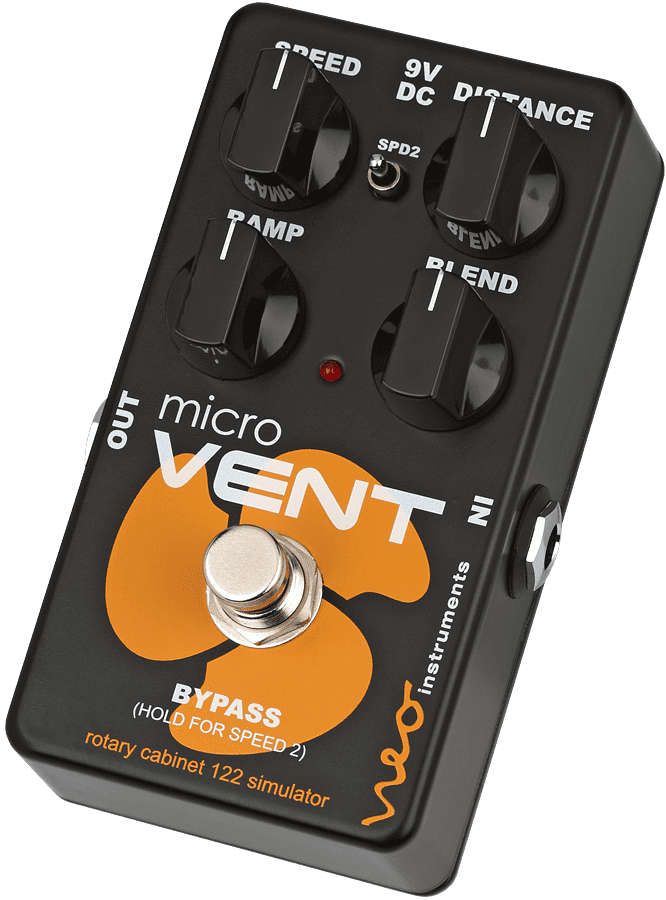

Think big
The micro Vent's compact super sturdy housing hosts an insanely powerful SHARC DSP with the same processing power
as the one found in the Ventilator II. For the analog circuitry only the best components were chosen to ensure a no-compromise sound that will satisfy you.
Power requirements are 9V DC with standard negative polarity, so the micro Vent integrates easily in larger pedalboards with a central PSU.
Analog Blend
Pros like Stevie Ray Vaughan, David Gilmour and many more got their distinct sound on recordings and on stage with a simple trick: they mixed the rotary speaker and guitar amp signals together. To achieve a similar effect with only one amp, the micro Vent features an analog BLEND circuit, providing an uncolored and latency free mixing-in of the dry signal for that classic rotary sound we all know and love.
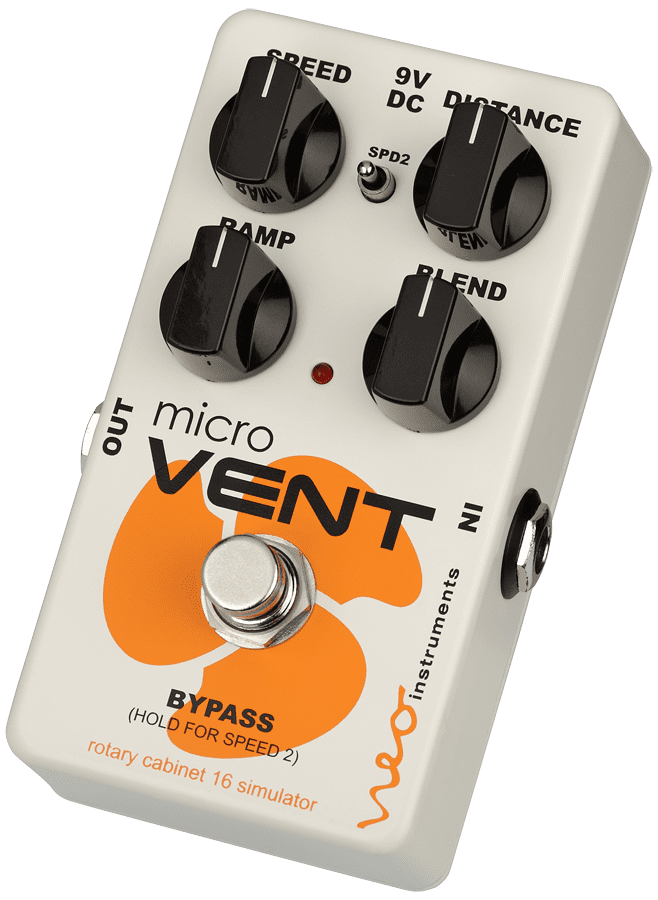
Key Features
- For guitar, bass and keys
- Leslie 122 emulation (micro Vent 122), Vibratone emulation (micro Vent 16)
- Extremely powerful SHARC DSP
- Standard size stompbox enclosure
- 9V DC standard negative polarity
- Mono in / mono out
- Two selectable Speeds (Speed1 continous, Speed2 Slow/Stop/Fast)
- Variable microphone to rotors distance
- Analog Blend
- Silent Footswitch with 5 operating modes for Bypass and Speed select
- True Bypass or Buffered Bypass
Specs
- Signal processing: 32 Bit SHARC DSP
- Analog Digital Conversion: 48khz, 24 Bit
- Digital Analog Conversion: 48khz, 24 Bit
- Noise Level: -90 dBA
- Max Input Level: +5 dBV
- Input Impedance: 0.5MOhm
- Output Impedance: 400 Ohms
- Recommended Load Impedance: 10 KOhms or more
- Weight: 235g / 8 oz
- Dimensions (W x D x H): 113x 65x 47mm
- Current Draw : 180mA
- Connectors: Input, Output, DC In
